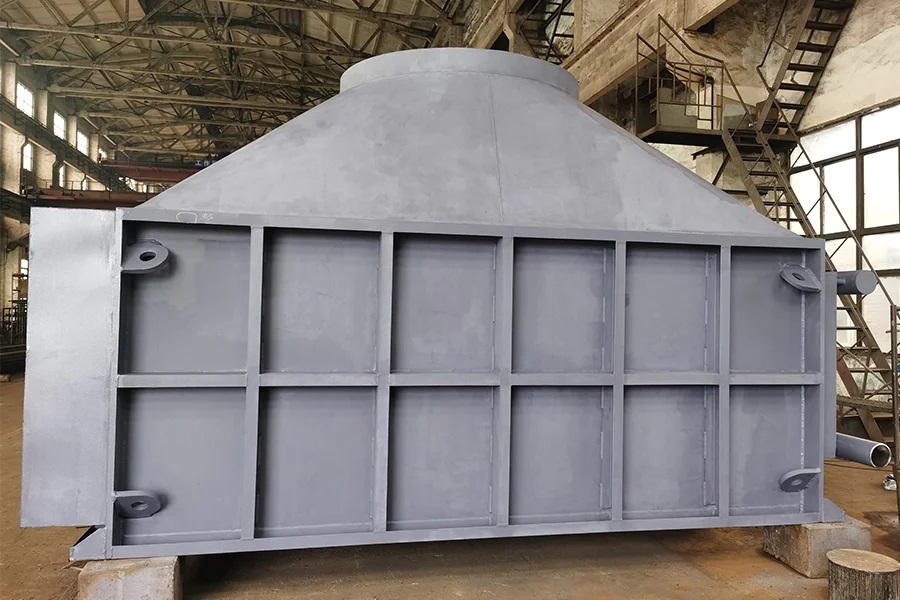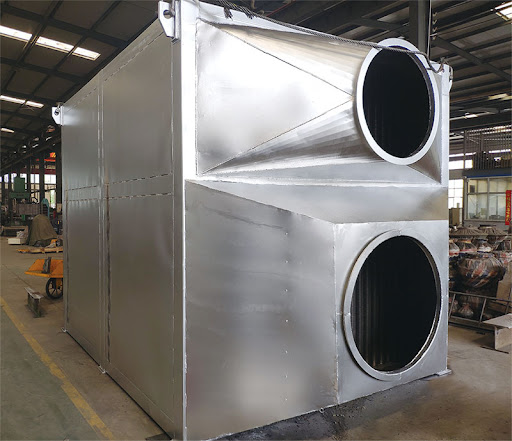Products Description
A heat pipe heat exchanger (HPHE) is a highly efficient passive heat transfer device that utilizes the phase change of a working fluid to transport heat between a heat source (evaporator) and a heat sink (condenser). It is widely used in energy recovery, electronics cooling, HVAC systems, and industrial processes due to its high thermal conductivity, compact design, and reliability.
Components of a Heat Pipe Heat Exchanger
1. Heat Pipe Core
-Sealed, vacuum-tight tubes (usually made of copper, aluminum, or stainless steel).
- Contains a small amount of working fluid (e.g., water, ammonia, or refrigerants).
- Internal wick structure (sintered metal, grooves, or mesh) for capillary action.
2. Evaporator Section (Hot Side) - Absorbs heat, vaporizing the working fluid.
3. Condenser Section (Cold Side) - Releases heat, condensing the vapor back into liquid.
4. Adiabatic Section (Optional) - A neutral zone separating the evaporator and condenser (used in some designs).
Heat Pipe Heat Exchanger Working Principle
The working principle of a heat pipe heat exchanger is based on the unique heat transfer mechanism of the heat pipe. A heat pipe is a closed pipeline filled with a specific working fluid (such as water or other thermal conductive medium) inside. The two ends of the heat pipe are the evaporator (low-temperature end) and the condenser (high-temperature end), forming a closed system.
1. Evaporation Process
- At the evaporator section, the working fluid absorbs heat from the heat source, reaching its saturation temperature and evaporating into vapor.
- This phase change absorbs a large amount of latent heat, making the evaporator an efficient heat absorption zone.
2. Vapor Transport - Due to the pressure difference, the vapor moves rapidly toward the condenser section.
- The heat pipe’s high thermal conductivity (up to 2000× that of silver and 6000× that of copper) enables rapid heat transfer even under small temperature differences.
3. Condensation Process
- At the condenser section, the vapor releases heat to the cooling medium (e.g., air or water), condensing back into liquid.
- The released heat can be reused, improving energy efficiency.
4. Liquid Return (Recovery)
- The condensed liquid returns to the evaporator via capillary action (wick structure) or gravity, completing the cycle.
- This continuous phase-change process ensures highly efficient heat transfer with minimal energy loss.
Advantages of Heat Pipe Heat Exchangers
1. Efficient Heat Transfer
- Heat pipe heat exchangers transfer heat through phase change (evaporation & condensation), achieving extremely high thermal conductivity (2000× silver, 6000× copper).
- They maintain high efficiency even at low temperature differences, outperforming traditional heat exchangers.
2. Compact & Lightweight Structure
- The design is simple and space-saving, consisting mainly of heat pipes and external radiators.
- Ideal for space-limited applications (e.g., electronics cooling, aerospace).
3. Safe & Reliable Operation
- Fully automatic control
– No need for manual intervention; self-regulating.
- Corrosion resistance
– Wall temperature can be adjusted to avoid corrosive zones.
- Anti-corrosion coatings (e.g., nano-coatings) further enhance durability in harsh environments.
4. Energy Saving & Eco-Friendly
- Recovers waste heat, reducing energy consumption by 20-50%.
- Supports sustainable and green energy initiatives. 5. Easy Maintenance - Modular design
– Each heat pipe is independent; damaged units can be replaced individually.
- Self-cleaning
– Vibration prevents dust accumulation.
- No condensation issues
– Exhaust temperature stays above dew point, avoiding corrosion and coking.
6. Wide Applicability
-Used in:
- Electronics cooling (CPUs, LEDs, power devices)
- HVAC & energy recovery (air handling units, industrial exhaust heat recovery)
- Renewable energy (solar thermal, geothermal systems)
- Aerospace & automotive (satellite thermal control, EV battery cooling)
- Medical equipment (precision temperature control)
Comparison with Other Heat Exchangers
|
Feature |
Heat Pipe HX |
Plate HX |
Rotary HX |
|
Efficiency |
Very High |
Medium |
High |
|
Maintenance |
Low |
Medium |
High |
|
Cross-Leakage |
None |
Possible |
Possible |
|
Power Use |
None |
Low |
Yes (motor) |
|
Temp Range |
Wide |
Limited |
Medium |
Heat pipe heat exchangers offer superior heat transfer efficiency, compact design, and zero energy consumption, making them ideal for HVAC, industrial waste heat recovery, electronics cooling, and aerospace applications.

Heat pipe heat exchanger


